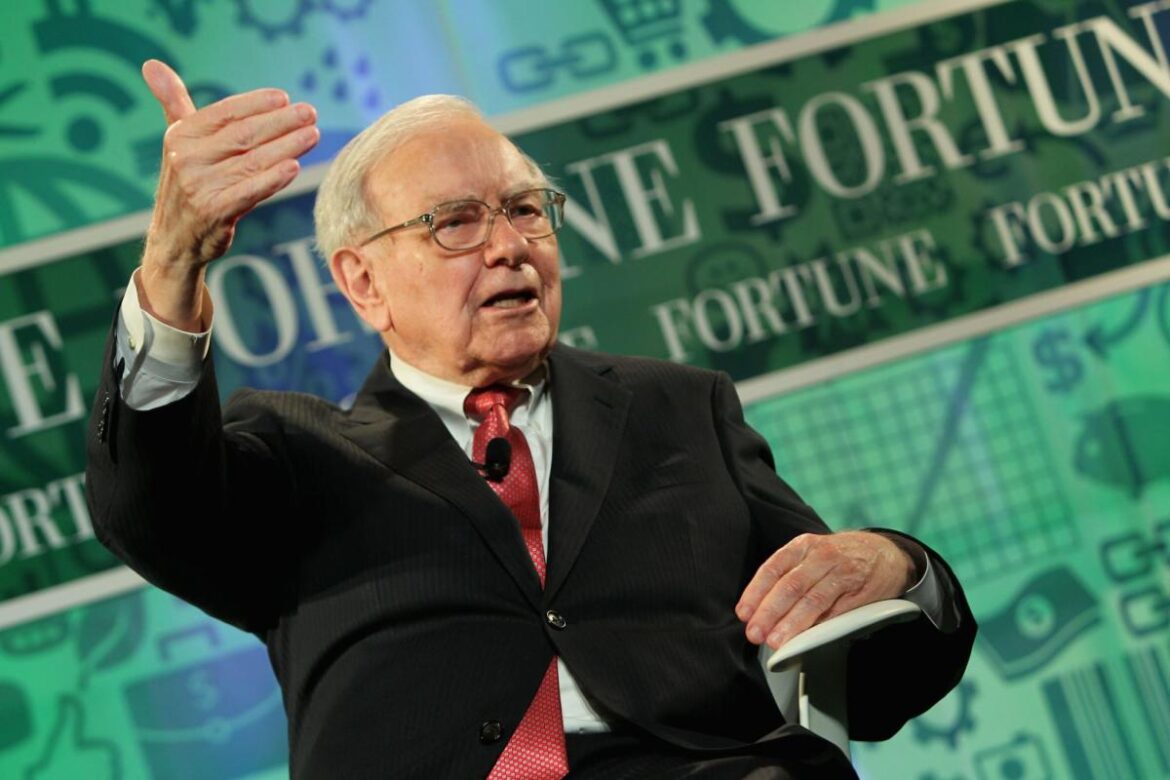
Banks are fighting back against deepfakes and voice cloning that snare unsuspecting victims.
Source link
financial
Caitlin Clark of the Iowa Hawkeyes waves to the crowd during senior day festivities after the match-up against the Ohio State Buckeyes at Carver-Hawkeye Arena on March 3, 2024 in Iowa City, Iowa.
Matthew Holst | Getty Images Sport | Getty Images
Three years after three little letters revolutionized collegiate sports, a billion-dollar industry is funneling more money into college athletes’ bank accounts — and financial literacy has never been more important.
In 2021, college athletes in the NCAA gained the opportunity to benefit financially from their name, image and likeness — known as NIL regulations. That meant that they could get paid for signing autographs or posting on social media as brand ambassadors, among other things.
Athletes like Louisiana State University gymnast Olivia Dunne and University of Iowa women’s basketball star Caitlin Clark have NIL valuations over $3 million, according to college sports site On3, which combines an athlete’s projected value to his or her roster and their licensing and sponsorship prospects to estimate an overall annual value.
The NIL regulations have resulted in athletes younger than ever cashing in and saving up, creating a need for financial literacy specifically tailored to them.
UCLA quarterback Chase Griffin has used the experience of securing NIL deals to learn valuable lessons about money.
Griffin is a two-time winner of the National NIL Male Athlete of the Year award and has inked nearly 40 NIL deals, each ranging from four figures to nearly six figures, he said.
Quarterback Chase Griffin #11 of the UCLA Bruins looks to pass the ball in the game against the Arizona Wildcats at the Rose Bowl on November 28, 2020 in Pasadena, California.
Jayne Kamin-oncea | Getty Images Sport | Getty Images
He says his framework around money has come a long way since his freshman year of college, back when he received stipend money from the university.
“With my stipend, that was the first time I had that much money in my bank account. What I found was that I wasn’t as good with financial literacy as I thought,” Griffin told CNBC. “I knew I was getting another stipend the next month, so I was spending my entire stipend. As I’ve gotten older, I look at money through the means of what it allows me to do.”
Griffin is now saving his NIL money to buy a house after graduation. He’ll graduate from UCLA with a master’s degree in legal studies in June.
The NIL era has allowed college athletes to save for the future and seek professional financial advice in a way many 18- to 22-year-olds can’t.
NCAA athletes hire agents and financial advisors to help them negotiate NIL deals, ushering in new financial responsibilities.
“Athletes are going pro earlier, which is great,” said former NFL player and CNBC Global Financial Wellness Advisory Board member Brandon Copeland. “All of the issues that pro athletes have dealt with for years are now going downstream.”
Copeland is the CEO of Athletes.org, an organization that focuses on helping college athletes navigate this new world. Athletes.org works with NCAA athletes around the country to provide free, on-demand support for key decisions in their life such as finding a lawyer to review an NIL deal. It also provides a forum to discuss everything from negotiation tactics to mental health.
“The first thing athletes should know is taxes are real,” Copeland told CNBC. “That number you see is not exactly what you’re going to get. Don’t go and spend it all in one place at one time.”
Financial advisors also help to fill in those who need advice with what to do with their money.
Morgan Stanley’s head of Global Sports and Entertainment, Sandra Richards, and her team work with several NCAA athletes. Richards said she works to make sure her advisors help their clients identify their financial goals from the beginning.
“It’s forcing these young people to have the conversation about, what do I want this money to do for me,” Richards said. “What are we playing for, and why are you in this, and what do you want to do with this money? I’m optimistic about these young people. You have so much access to information and social media.”
As part of its National Financial Literacy Month efforts, CNBC will be featuring stories throughout the month dedicated to helping people manage, grow and protect their money so they can truly live ambitiously.
Social media is one of the biggest ways to reach NCAA athletes with critical financial information. Videos on Instagram, TikTok or YouTube, for example, can offer tips or insights, although it’s important to vet the quality and sources of that advice.
Retired NFL player Carl Nassib uses his own social channels to gain knowledge about personal finance, adding that he wished NIL was around while he was in college. Nassib was a walk-on college football player at Penn State from 2011 to 2015, and once had to sell his books to pay for a broken pipe in his apartment.
Nassib is excited about what higher levels of financial literacy will mean for college athletes of the present and future.
“It would be nice if you get some athletes who are role models in financial wellness,” Nassib told CNBC. “I think the ripple effects of that will be extremely positive. I have been working with so many players in the NFL, trying to get them on a better path. If we can move that learning curve back four years, that’ll just be so special and so impactful.”
Don’t miss these exclusives from CNBC PRO
China’s Largest Fund Managers Eye Spot Bitcoin ETFs in Hong Kong’s Financial Markets
 Two of China’s largest fund management firms have recently been reported to be filing applications for spot bitcoin exchange-traded funds (ETFs), according to regional sources on Monday. Harvest Global Investments and Southern Fund are seeking approval from Hong Kong’s Securities and Futures Commission (SFC), aiming to obtain authorization to introduce spot bitcoin ETFs. China’s Investment […]
Two of China’s largest fund management firms have recently been reported to be filing applications for spot bitcoin exchange-traded funds (ETFs), according to regional sources on Monday. Harvest Global Investments and Southern Fund are seeking approval from Hong Kong’s Securities and Futures Commission (SFC), aiming to obtain authorization to introduce spot bitcoin ETFs. China’s Investment […]
Source link

The Bank of England (BoE) and the UK Financial Conduct Authority (FCA) have announced the launch of the Digital Securities Sandbox (DSS) on April 3.
The new framework aims to facilitate the use of emerging technologies, such as distributed ledger technology (DLT), in issuing, trading, and settling financial securities. It will allow participating firms to explore innovative technological applications within a structured regulatory environment.
The initiative represents an effort by UK financial regulators to integrate cutting-edge technologies into the financial market infrastructure, aiming for a more efficient and resilient financial system.
Digital finance
Designed as a five-year program, the DSS is intended to let firms undertake roles traditionally associated with central securities depositories, including the issuance, maintenance, and settlement of securities.
Furthermore, the framework enables the integration of these roles with trading venue functionalities, potentially leading to the creation of new business models in the financial sector.
The DSS has been established with three key objectives: to encourage innovation in the financial system, to maintain financial stability, and to uphold market integrity.
It encompasses a variety of financial instruments, such as equities, bonds, money market instruments, and units in collective investment undertakings — excluding the trading and settlement of derivative contracts and unbacked digital assets like Bitcoin.
The initiative aims to seamlessly integrate new technological solutions into the financial markets, allowing for regular interaction between DSS participants and other market players. Securities issued within the DSS are intended to be used in conventional financial transactions, including as collateral and in derivative contracts, subject to existing regulatory standards.
Mitigating risks
To mitigate risks to financial stability, the Bank of England plans to set limits on the value of securities that can be issued within the DSS. This approach reflects the experimental nature of these technologies in significant financial contexts.
The DSS will introduce a phased structure of permitted activities, with each phase designed to gradually increase the scope of allowed operations for participating firms.
The sandbox is anticipated to offer considerable benefits to the financial system, particularly in enhancing the efficiency of post-trade processes. This could lead to significant cost reductions for various market participants, including pension funds, investment firms, and banks.
The Bank and FCA have initiated a consultation period to gather input on the DSS’s proposed operation and regulatory framework. The consultation is directed at potential infrastructure providers and stakeholders interested in the DSS, including firms, law firms, and industry bodies.
Following the consultation, the central bank and FCA will issue a response and finalize the guidelines and regulations for the DSS, with plans to accept applications starting summer this year.
Latest Alpha Market Report

Burkett Financial Services, a South Carolina-based financial planner, disclosed investments in two Bitcoin exchange-traded funds (ETFs) on April 1.
Burkett’s latest Form 13F filing indicates it holds 602 shares of BlackRock’s iShares Bitcoin Trust (IBIT), a spot Bitcoin ETF. The firm’s holdings are valued at $24,363.
The company also holds 630 shares of ProShares’ Bitcoin Strategy ETF (BITO), which invests in Bitcoin futures. Its BITO shares are valued at $20,344 in total.
Burkett’s two crypto-related holdings comprise just a small portion of the $194 million of investments it disclosed in its 13F filing. The firm’s other holdings include traditional exchange-traded funds (ETFs) and large-cap stocks such as Microsoft and Apple, among other investments.
Burkett is the first traditional financial institution to gain exposure to Bitcoin via the ETFs.
ETF growth
News of Burkett’s investment comes shortly after other discussions around spot Bitcoin ETFs that suggest that the investment category will gain traction.
Some commentators expect Bitcoin ETFs to see more significant inflows in the future. Bitwise CIO Matt Hougan said that Bitcoin spot ETFs could experience $1 trillion in inflows if global wealth managers allocate 1% of their portfolios to Bitcoin.
Those inflows could also improve the price of Bitcoin. Ark Invest CIO and CEO Cathie Wood has stated that Bitcoin could be worth significantly more than $1.5 million if institutions allocate more than 5% of their portfolios to Bitcoin, building on an earlier prediction for 2030.
As of April 1, spot Bitcoin ETFs held $74 billion in assets under management (AUM). This comprises over 5% of Bitcoin’s circulating supply, assuming a market cap of $1.48 trillion.
Bitcoin ETFs saw over $800 million in inflows during the week leading up to April 1, according to a report from CoinShares head of research James Butterfill.
The post Burkett Financial Services buys Bitcoin via ETFs appeared first on CryptoSlate.
$200B Financial Group Cetera Approves 4 Spot Bitcoin ETFs on Its Platform
 Cetera Financial Group, a platform with $475 billion in assets under administration and $190 billion in assets under management, has approved four U.S. spot bitcoin exchange-traded funds (ETFs) for use in brokerage accounts on its platform. “We are prudently embracing bitcoin ETFs and we prioritized developing this important guidance to help our financial professionals implement […]
Cetera Financial Group, a platform with $475 billion in assets under administration and $190 billion in assets under management, has approved four U.S. spot bitcoin exchange-traded funds (ETFs) for use in brokerage accounts on its platform. “We are prudently embracing bitcoin ETFs and we prioritized developing this important guidance to help our financial professionals implement […]
Source link
House Financial Services Committee Advances Bill to Repeal SEC Bulletin Preventing Banks From Offering Crypto Custody Services
 The House Financial Services Committee of the U.S. Congress has advanced a resolution that seeks to disavow SEC SAB 121, a bulletin that leaves banks and financial institutions out of the cryptocurrency custody provider market. However, the resolution, advanced with bipartisan support, is unlikely to be passed at a vote on the House floor, according […]
The House Financial Services Committee of the U.S. Congress has advanced a resolution that seeks to disavow SEC SAB 121, a bulletin that leaves banks and financial institutions out of the cryptocurrency custody provider market. However, the resolution, advanced with bipartisan support, is unlikely to be passed at a vote on the House floor, according […]
Source link
Warren Buffett says the stock market is increasingly ‘casino-like’—and young investors need to remember this ‘one fact of financial life’ to avoid the mess
Berkshire Hathaway CEO Warren Buffett shared a moving tribute to his fallen friend and right-hand man Charlie Munger in his annual shareholder letter over the weekend. The Oracle of Omaha lauded Munger as the “architect” of Berkshire’s success, eulogizing the “abominable no-man” by discussing some of his favorite whipping posts—including his comparison of the modern stock market to a casino.
“For whatever reasons, markets now exhibit far more casino-like behavior than they did when I was young,” Buffett wrote, adding that “though the stock market is massively larger than it was in our early years, today’s active participants are neither more emotionally stable nor better taught than when I was in school.”
Buffett’s words of caution were definitely a throwback to some of Munger’s favorite lines. Throughout his more than 75-year career, Munger argued that there were two types of people who buy shares in the stock market: investors and speculators. The investors—who are, above all, disciplined, hard-working, and thoughtful when buying assets—were always Munger’s people. But the speculators—those who seek nothing more than a quick buck without care for the intrinsic value of what they’re buying—well, Munger really didn’t like them much.
“They love gambling, and the trouble is, it’s like taking heroin,” he said in an April 2022 interview with Berkshire Hathaway investment officer Todd Combs. “A certain percentage of people when they start just overdo it. It’s that addictive. It’s absolutely crazy, it’s gone berserk. Civilization would have been a lot better without it.”
Like Munger, Buffett fears that too many modern investors have become entranced by speculative investing. Rather than digging into Securities and Exchange Commission (SEC) filings to find the best possible business to invest in, too many investors, particularly young investors, are simply buying stocks that are trendy, hoping someone else will pay more for them a few months, days, or even hours down the line. What or who does Buffett blame for this rise in “casino-like” behavior in the markets? Well, the democratization and gamification of trading is certainly not helping. As the billionaire put it: “The casino now resides in many homes and daily tempts the occupants.”
Becoming a stock market ‘casino’
Part of the reason the stock market is becoming increasingly “casino-like,” according to Buffett, is simply that buying and selling stock has never been easier—or more fun—due to the rise of online trading applications. The SEC is happy about the first part of that sentence, but not so much the second. Here’s how SEC Chair Gary Gensler put it in a statement in 2021 after launching an investigation into the gamification of trading applications:
“While these new technologies can bring us greater access and product choice, they also raise questions as to whether we as investors are appropriately protected when we trade and get financial advice…In many cases, these features may encourage investors to trade more often, invest in different products, or change their investment strategy.”
Like Gensler, Buffett is worried that the gamification of trading is leading to an increase in speculators in the market, and in this modern era of connectivity, the Berkshire CEO worries that could lead market “panics” to happen more rapidly.
“Speed of communication and the wonders of technology facilitate instant worldwide paralysis, and we have come a long way since smoke signals,” he warned. “Such instant panics won’t happen often—but they will happen.”
Remember this key ‘fact of financial life’—and you’ll avoid gambling in the market
For the speculators that are using the stock market like a casino, Buffett had one main tip: Remember who is really making money from your gambling—the House.
“One fact of financial life should never be forgotten,” he wrote. “Wall Street – to use the term in its figurative sense – would like its customers to make money, but what truly causes its denizens’ juices to flow is feverish activity.”
Modern brokerage firms, at times, entice investors into stocks or complicated derivatives with new and fancy features on their trading apps. But they aren’t doing it to help the average retail investor, they’re doing it because they make money from fees on every trade. That means the more trades, the better it is for the House, even if that’s not true for investors.
During periods where more of the general public gets interested in stocks, Buffett explained, “whatever foolishness can be marketed will be vigorously marketed – not by everyone but always by someone.”
The Berkshire CEO noted that when the scene then “turns ugly,” and speculators lose money during a market meltdown, they shouldn’t expect a helping hand—or justice—either.
“The politicians then become enraged; the most flagrant perpetrators of misdeeds slip away, rich and unpunished; and your friend next door becomes bewildered, poorer and sometimes vengeful,” he wrote. “Money, he learns, has trumped morality.”
This story was originally featured on Fortune.com
South Africa advances financial inclusion with crypto and digital payment reforms

South Africa announced plans to weave digital payments and crypto into its financial fabric to boost the economy for marginalized groups.
The announcement was made in the country’s 2024 budget and underlines the government’s drive to build a digital economy through active collaborations between public and private sectors to enhance financial innovation.
The budget targets enhancing access to digital payments for people in townships and rural areas who predominantly handle cash. Initiatives will provide local merchants with the infrastructure needed for digital transactions, like internet connectivity and point-of-sale systems.
Starting with a pilot in Gauteng, these efforts seek to broaden the acceptance and use of digital payments among both consumers and businesses.
Regulatory Standards
South Africa intends to legitimize crypto payments and make them an intrinsic part of the local economy over the coming years, starting with a regulatory framework for the sector. The country made crypto an official financial product in 2022, akin to company shares or debt.
The Intergovernmental Fintech Working Group (IFWG) will start issuing comprehensive guidelines in 2024 that will focus on “stablecoins” and their practical applications. This effort will complete a thorough review of the stablecoin environment domestically and create regulatory recommendations that align with global standards.
In 2023, the Financial Sector Conduct Authority (FSCA) and the Financial Intelligence Centre (FIC) started to register crypto asset service providers, following changes to the FIC Act that align with FATF recommendations. The FSCA’s classification of crypto as a financial product now requires service providers to obtain a license, ensuring they meet strict operational standards.
The government is reviewing the extension of the FIC Act’s mandate, which currently requires reporting cash transactions over R49,999, to include crypto transactions. The move aims to use such data in fighting crime.
Additionally, the government intends to explore tokenization and how blockchain technology can represent assets, with the publication of policy and regulatory implications planned for December 2024.
The South African central bank has been considering the development of a central bank digital currency (CBDC) for a number of years. However, the regulator has yet to announce any significant progress in the area.
Supporting financial inclusion
The National Treasury and the Reserve Bank, together with international partners, are rolling out four pilot projects focused on digital payments to aid small and informal businesses.
These projects aim to digitize community transactions, informal worker payments, and cross-border remittances to facilitate finance for small traders engaging in cross-border commerce. Each initiative addresses specific hurdles, from cutting remittance costs to implementing digital tipping for low-income workers.
These efforts highlight South Africa’s determination to be at the forefront of financial digitalization and inclusion, using technology to strengthen its economy and uplift its people. By integrating crypto and emphasizing a solid regulatory framework, the country shows a progressive approach that ensures innovation goes hand in hand with consumer protection and financial integrity.
How to make sure you pay a fair price for the financial advice you need.

When shopping for a financial planner, it’s natural to ask, “How much do you charge?” If you expect a simple, one-sentence answer, think again.
There are many ways that advisers get paid and it can get complicated. Their fee structure reflects the type of practice they want to run and the business model that reinforces their brand.
One of the best ways to vet an adviser is to ask how they arrived at their fee structure and why they chose it. What motivates them to charge the way they do?
“Every adviser loves to argue about which way [of getting paid] is the best and which is the worst,” said Chris Cybulsky, a certified financial planner in Austin, Texas.
Many advisers base their pay on a percentage of assets under management (AUM). The percentage, traditionally 1%, often varies based on the amount of a client’s investable assets.
Other popular options include charging an hourly fee or flat per-project fee (perhaps to craft a customized financial plan). In recent years, some advisers have adopted subscription pricing that offers tiers of ongoing service with different monthly or annual retainer fees.
If you want to hire an adviser for both financial planning and investment management, you might encounter a hybrid fee structure. That means you’ll pay a percentage of AUM for portfolio management plus a flat or hourly rate for financial planning (which could include help with household budgeting, retirement planning, estate or tax planning, etc.).
More advisers are favoring this hybrid approach because it stabilizes their income when markets plummet and clients’ investable assets shrink. It also gives them flexibility to serve a broader range of clients.
For instance, many early and mid-career professionals lack significant investments to manage or their assets are tied up in a tax-advantaged retirement account like a 401(k). But they may be willing to pay an adviser a flat fee for targeted financial advice and planning.
There are also advisers who earn commissions when they buy and sell certain financial products (such as annuities or mutual funds) or insurance policies on the client’s behalf. “Fee-only” refers to advisers who do not charge commissions and generate all their income from fees.
An adviser’s fee structure is revealing in itself. Those who prefer financial planning to portfolio management tend to charge flat or per-project fees that reflect the relative complexity of the client’s needs.
“You can tell how they think about the value of their service offering from the clarity and logic of how they present their fees,” said Sara Grillo, a New York City-based marketing consultant. “If they say they’re focused on financial planning, yet they are charging a fee on assets under management, you should be skeptical of any claims that the planning is robust.”
Indeed, it may indicate that the adviser wants to oversee as much of your assets as possible. The more assets you transfer to the adviser’s firm, the higher the adviser’s AUM fee.
“Their main concern might be to grow your assets and make sure those assets stay with them,” Grillo said. “I’m an advocate for flat fees because they promote more clarity and transparency.”
Advisers who work for big financial services companies are more apt to charge for AUM or collect commissions for selling specific products. That’s not necessarily a red flag: You can benefit if you want active investment management and the firm boasts top asset managers, proprietary research or access to alternative investments that can diversify your portfolio.
“If advisers charge an hourly rate or use a flat-fee model, they’re probably a smaller firm or sole practitioner,” said DJ Hunt, a certified financial planner in Melbourne, Fla. “So you may not get staff, just one set of eyes on everything.”
Know what you want
As long as you don’t need investment management — either because you’re a do-it-yourself investor or you don’t have much investable assets — then paying fees solely for financial planning expertise can make sense.
It’s easier to evaluate an adviser’s pricing if you know what you need from the outset. Asking a wealth manager to take your $300,000 or $1 million portfolio and make investment decisions that produce reasonable returns and reflect your risk tolerance is one thing. But if you’re more intent on learning whether to rent or buy a home, how to save for a child’s tuition or how to tell if you can afford to retire, you’re better off paying a fee for a skilled, credentialed financial planner.
“Assessing your needs can get tricky,” Hunt said. “When you first meet with an adviser, you may think you need help in just one area. That can lead to a broader discussion of other interrelated needs. Then you say, ‘I hadn’t thought of that’ and you realize it’s just the tip of the iceberg as your needs expand.”
More: Saving too little? Spending too much? How to know if your money worries are rational (or not).
Also read: How AI will change the ways financial advisers manage your money










